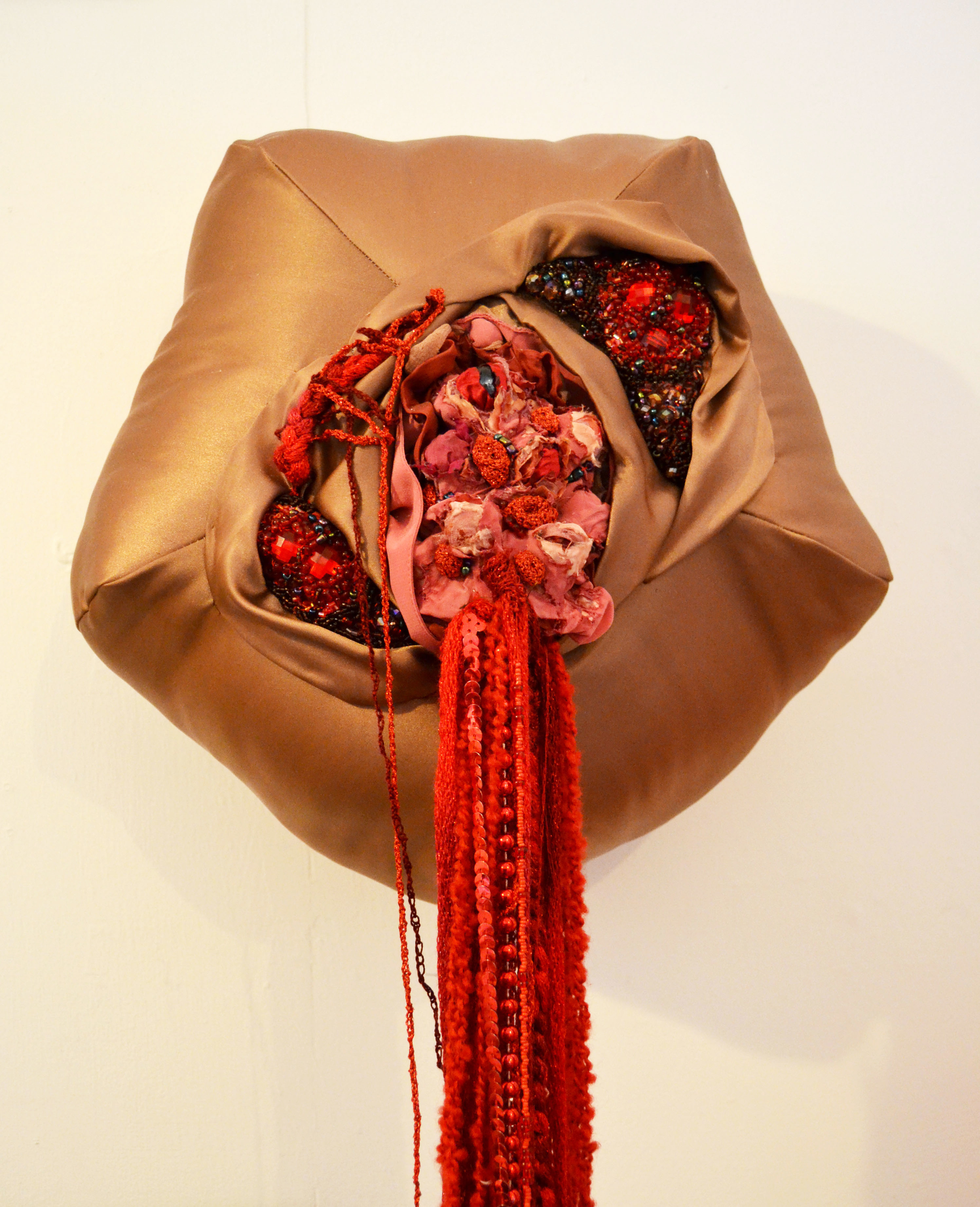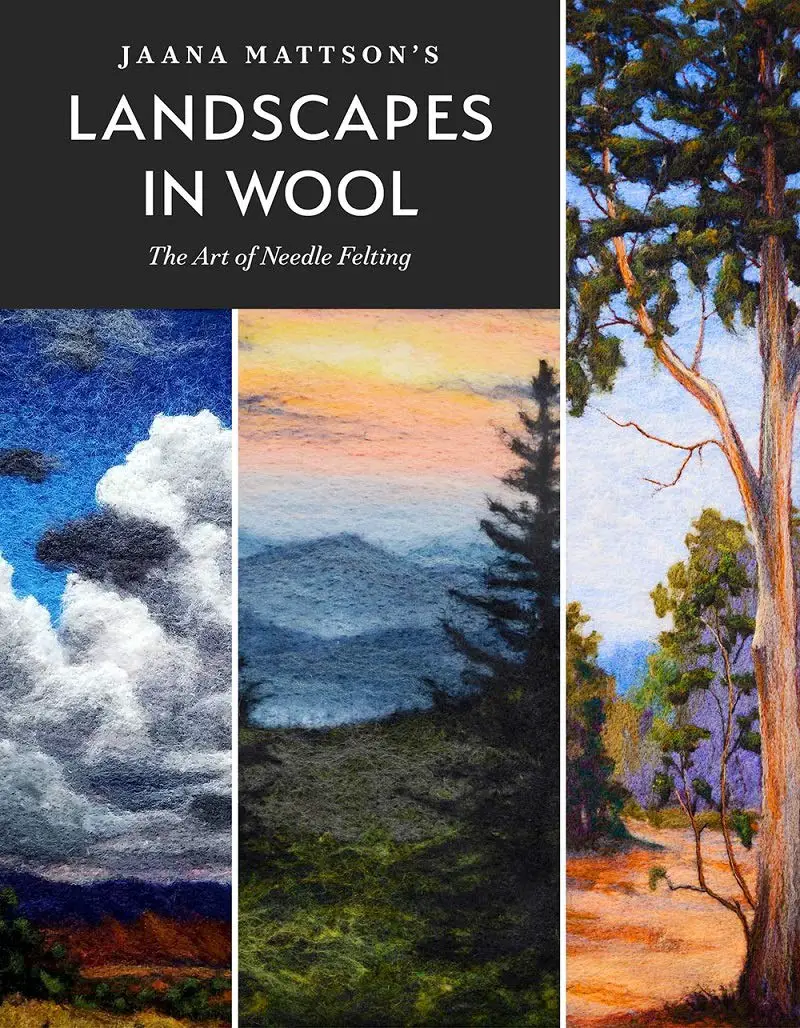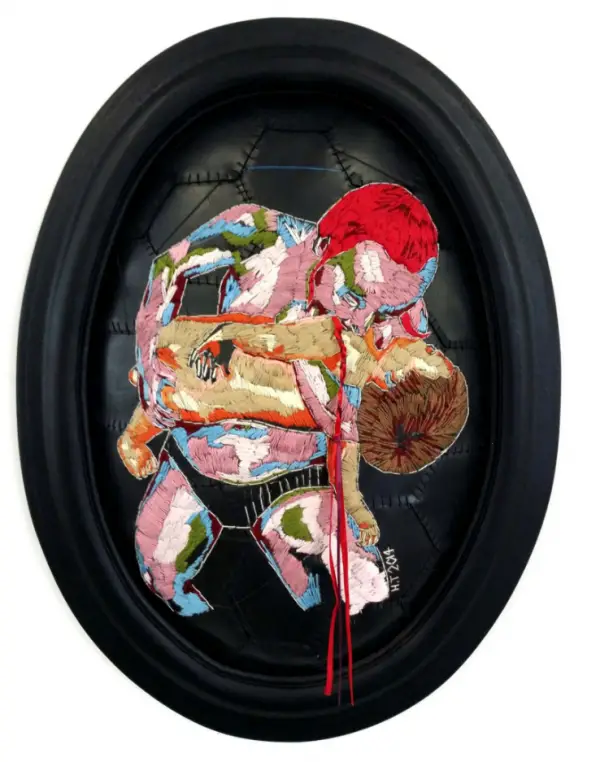
Hannalie Taute is an astonishing creative force. The South African artist depicts fairy tales in rubber and thread, stitching unnerving self-portraits.

Taute has worked with rubber, which she sources from discarded inner tubes from local businesses, since 2011. The process is labour intensive. The tubes are sliced, washed, polished and then stitched into canvases. She then embroiders her imagery into the rubber by hand, without thimble or any studio assistants. Found objects (doilies, photographs) find their way into the pieces.
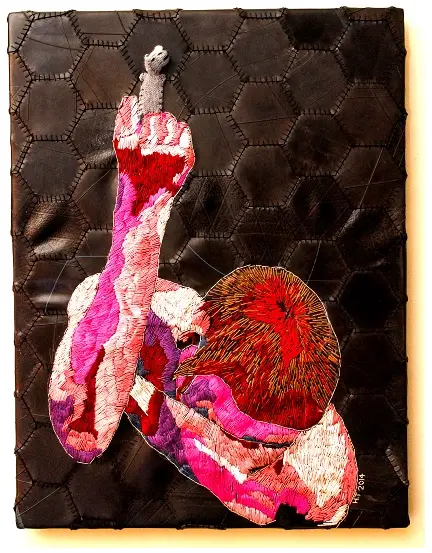
Her figures are raw, strong, and pitiless. To me, they perfectly embody 21st-century feminist strength. She poses her subject’s bodies in extreme positions; as if they are pushing against the rubber world around them. Her figures are the tormented and the tormentors at the same time.
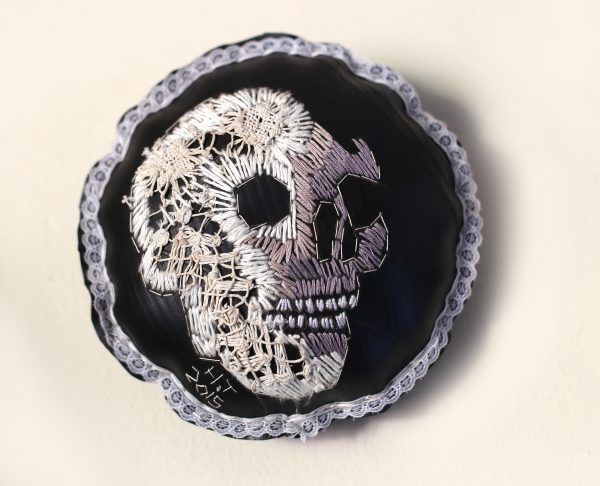
I caught up with Hannah via email, as she prepared for her most recent solo show, The Grimm Needle, which will open at the Fried Contemporary Art Gallery in Pretoria on Sept. 22, 2016.
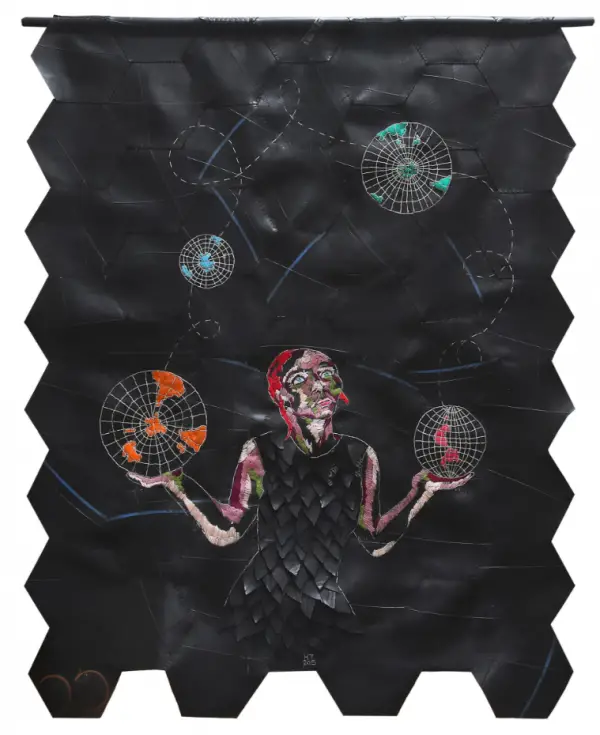
I’m particularly interested in how the materials an artist employs influence her artwork. The softness of the thread contrasts with the toughness of the rubber and generates an unusual energy, especially in your faces. Has the use of rubber influenced your choices about subject matter and composition? If so, how has it?
Hannalie: I do not believe that the use of rubber had any influence on my subject matter, or not consciously anyway. I think the medium has an influence on my technique though. Initially I made objects out of rubber (inner tubes) without any embroidery on it. Eventually when I started to embroider on the rubber, I had to go and get a book about embroidery since I’ve never done it before.
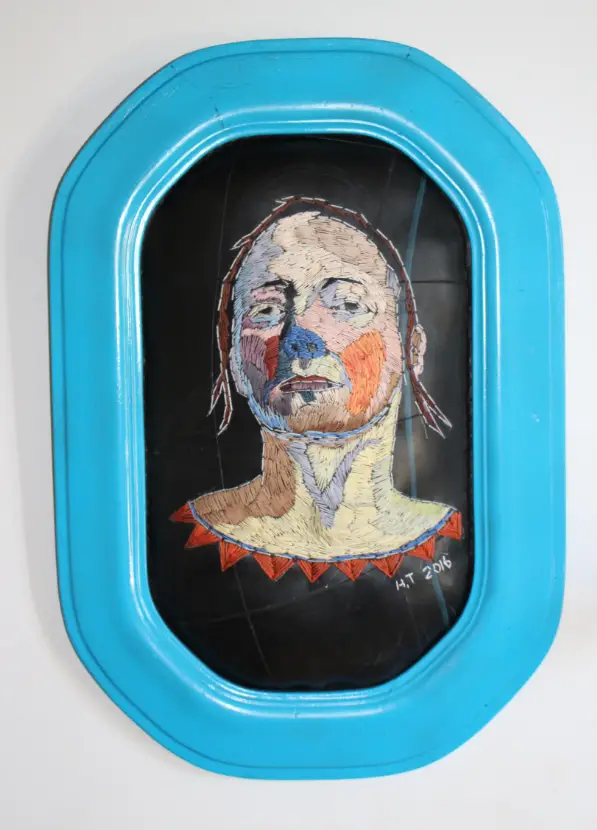
You might notice that my stitching is quite crude and that I use a thicker cotton, except in the Maggie Laubser piece you refer to. I received all those wonderful colours in lovely DCM embroidery floss from a friend as a gift, at the same time I was given the brief for the 100th anniversary of a very well-known Afrikaans magazine: Huisgenoot, and we had to revisit masters of South African art. I could re-interpret any Maggie Laubser piece, but decided to do her well known Self-portrait (1928), and try and do my face like she would do hers, by using the colours and posture she did with oil paint.
How about some more 3D Textiles?
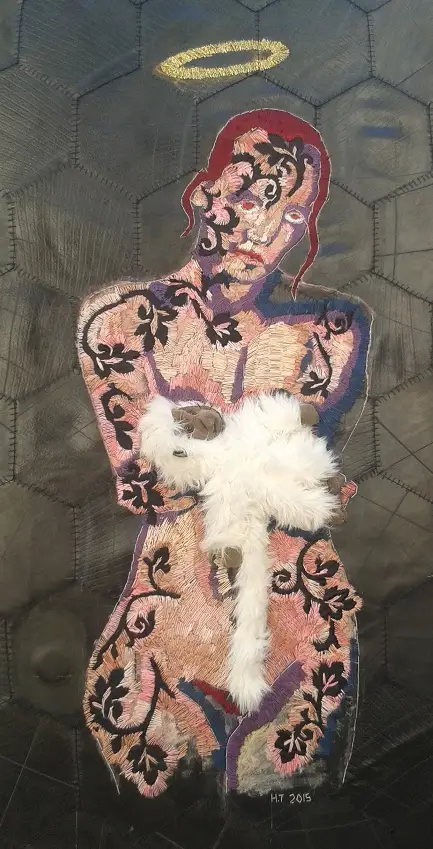
I wanted to challenge myself and see if I can ‘paint’ with thread.
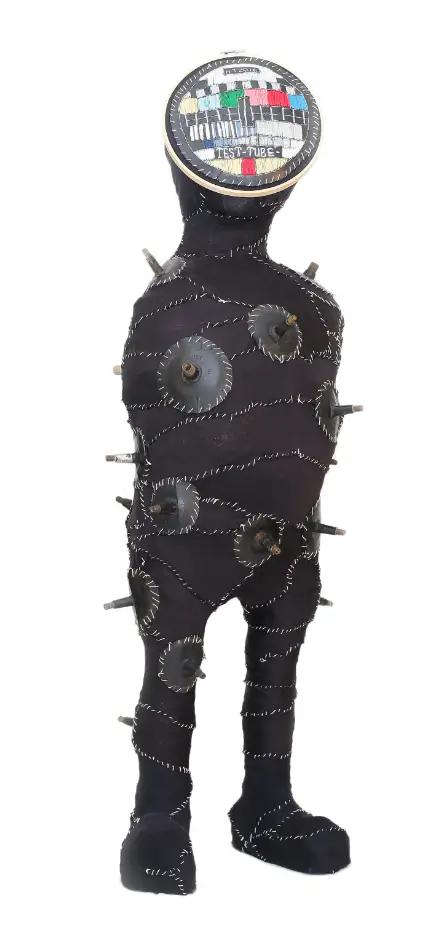
Initially I also wanted to make my ‘canvas’ the same size as hers, but due to time limit, I used a tractor size inner tube and cut the whole ‘canvas’ from the one side in one piece, instead of cutting up the inner tube in smaller pieces and stitch those together to form a quilt-like canvas like I sometimes do. I framed it with a vintage frame, but painted ‘blue’ because Maggie was known as a ‘colourist’.
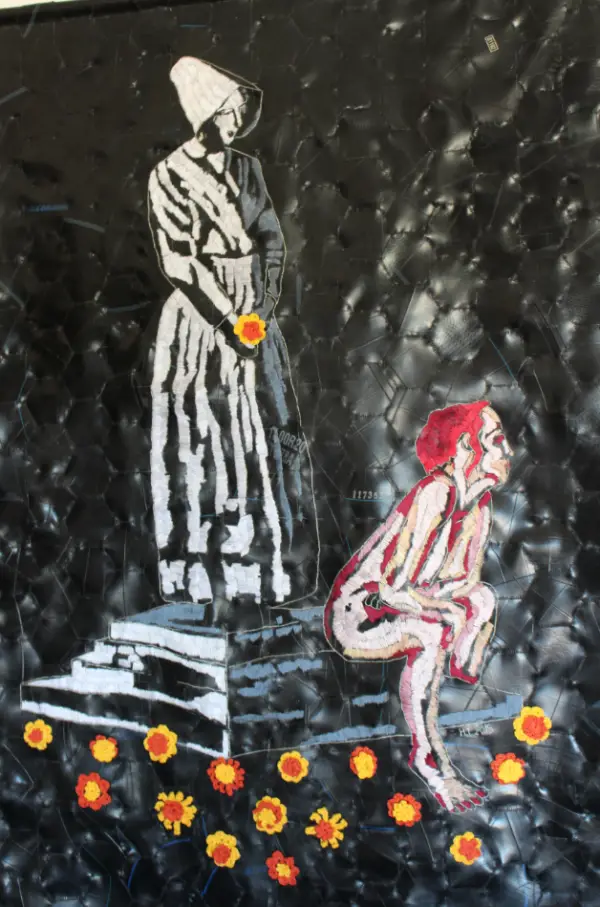
Speaking of your subject matter, much of your imagery has a fairy tale, dream-like quality. The same female figure reappears frequently, usually alone, in fraught circumstances. Who is this figure?
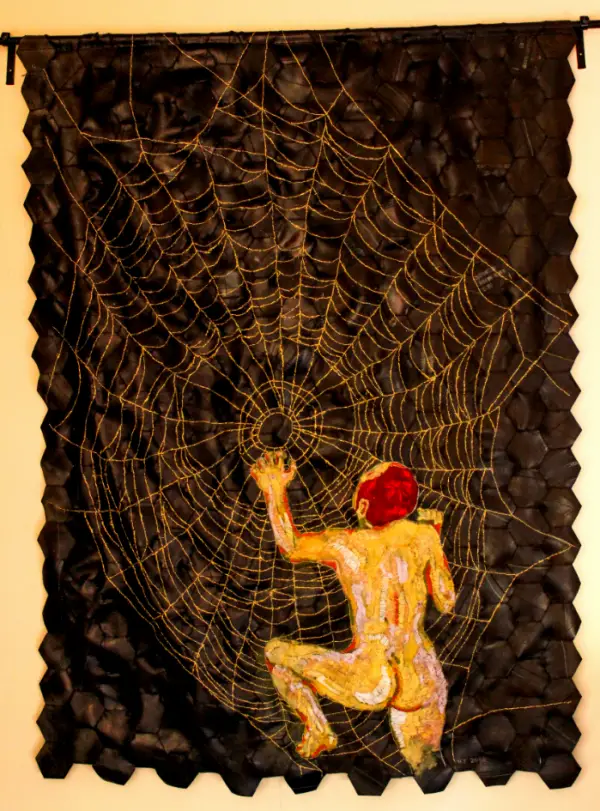
You are correct in your observations. I am mostly inspired by Fairy Tales, Myths, legends- I love stories and words. Some artists have models they work from. I use myself as reference. In the work “In the days when Bertha spun” was made during a time when my two boys were fascinated by spiders (we used to have two as ‘pets’). I also received a small book from a friend and in it was this beautiful image of a spiders web I saw lovely gold thread at a shop.
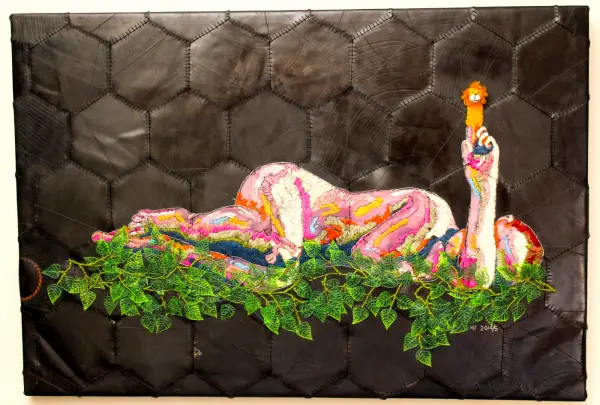
So While I was working on the piece I also stumbled upon the story of Bertha, who was a mythical figure known as special patroness of female industry. She is known in many different names, but in France when they refer to the golden age they say: In the days when Bertha spun. So I thought that the gold spider’s web fit in nicely with the reference to the golden age and myself as the industrious female climbing up this web that Bertha spun.
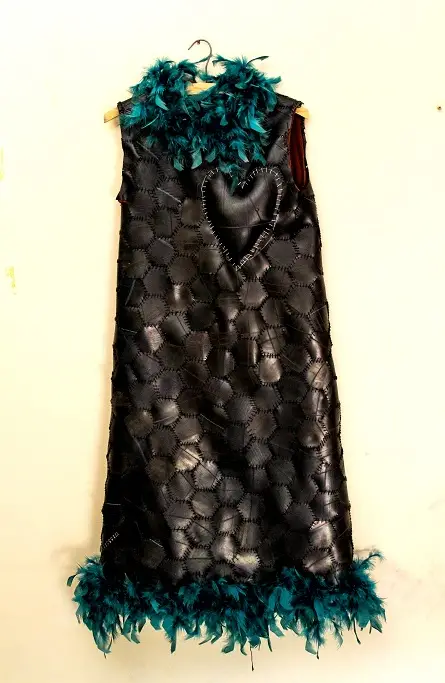
Your fantastic garments and costumes have the same energetic, provocative aesthetic as your sculptures and two-dimensional pieces. What role does performance art play in your creative life?
Thank you. I am flattered that you refer to it as ‘performance art’, when in effect I like dressing up, daydreaming about things to wear and I also ,since child-hood, like to play-pretend.
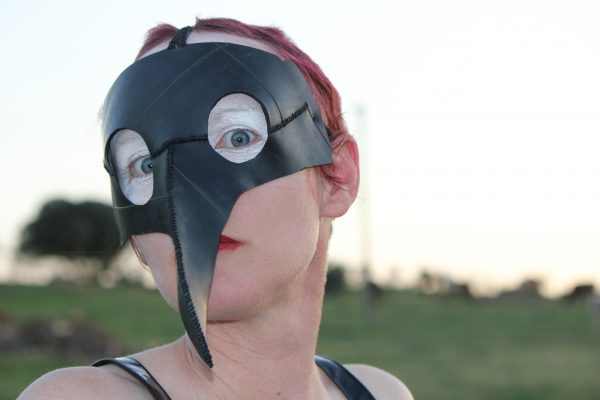
One can probably say that by thinking up ‘outfits’ made in the medium I employ in my artwork, I give myself the liberty and creative freedom to pretend that life and art is a two way mirror. When I was at art school, we got the advice to eat, sleep, everything art….and that is what I try to do.
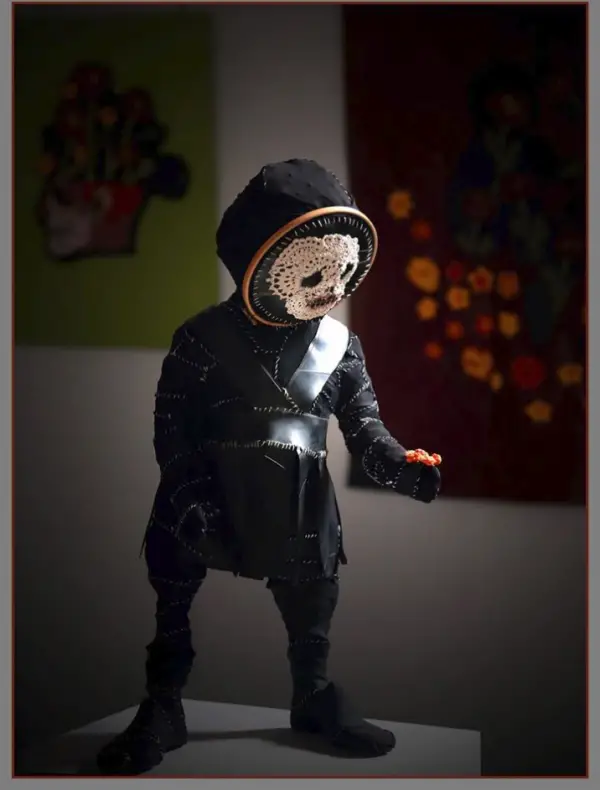
In terms of your process of translating imagery into your art, how do you organize your projects/ideas? Do you keep a sketchbook, journal or clip file?
Yes, I have sketchbooks dating back to 1998 and revisit them from time to time. Currently I have a variety of ‘sketchbooks/journals: raging from A3 size, sketchbook in which I do my planning for a work, to smaller ones – from A5 where I write down thoughts, quotes and make lists.
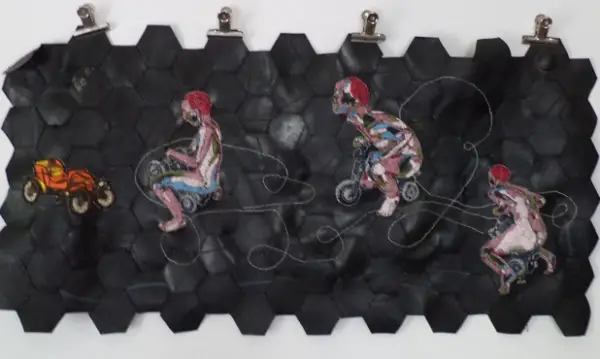
Cotton thread, textile, and rubber.
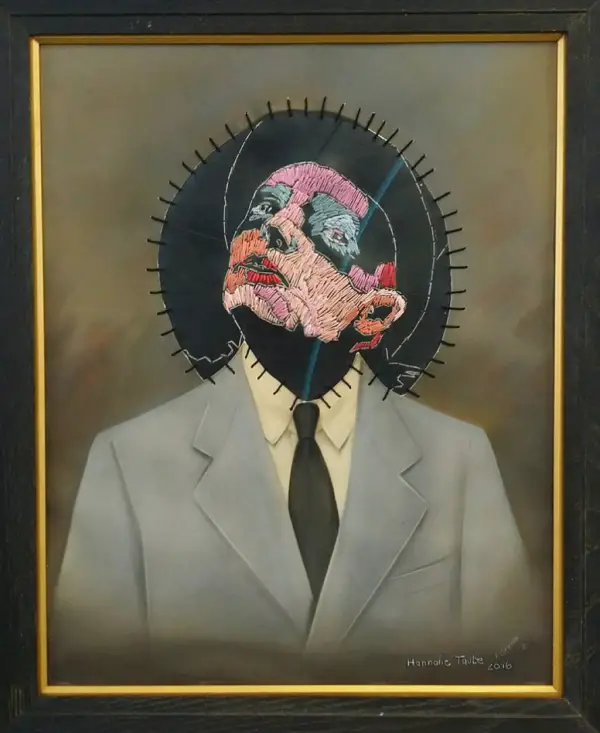
Finally, what are you currently working on or what new projects are you excited about in the near future?
My work will be included in a couple of group exhibitions until the end of the year. I have a solo exhibition: “The Grimm Needle” opening on the 22nd of September at Fried Contemporary, Pretoria, South Africa. I am also working towards a small solo show early next year- it will be my first international exhibition! More details to follow closer to the time.
Last but not least, I have entered for the Museum Rijswijk Textile Biennial 2017. Please hold thumbs!
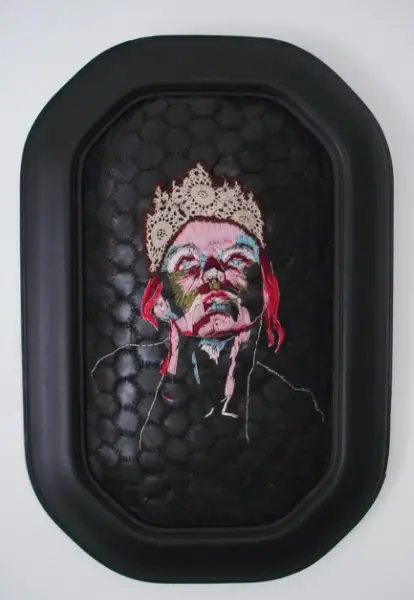
Cotton thread, batting and rubber, wood .
It was a pleasure to interview Taute. Despite the fierceness of her imagery, she was so warm and kind with her responses. Afrikaans is her first language. I encourage you to watch this video interview to hear the voice and language she hears when she creates.
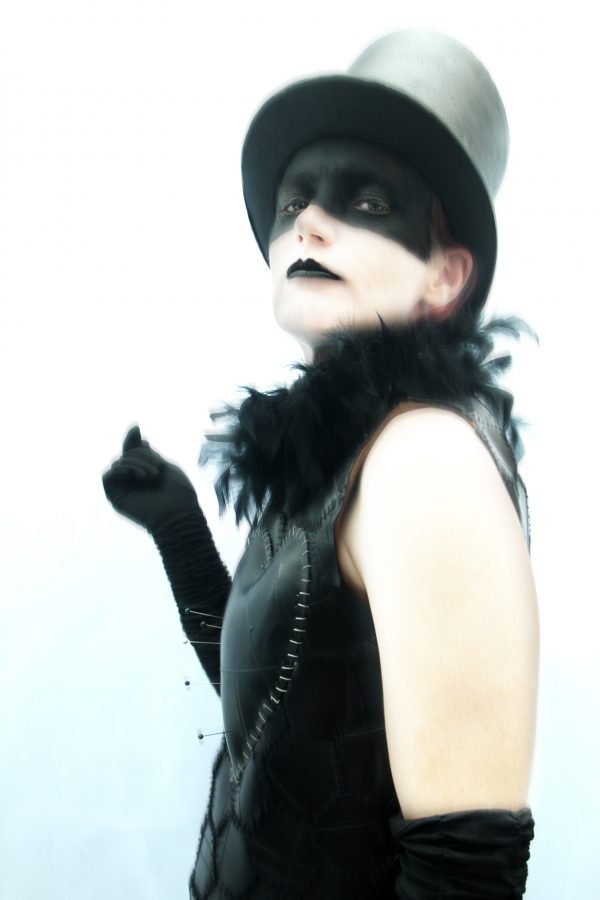
Spend a good long time on her fantastic website. And follow her on Instagram for ongoing insight into her wildly creative life.
Hannalie Taute is an awe-inspiring soul.


